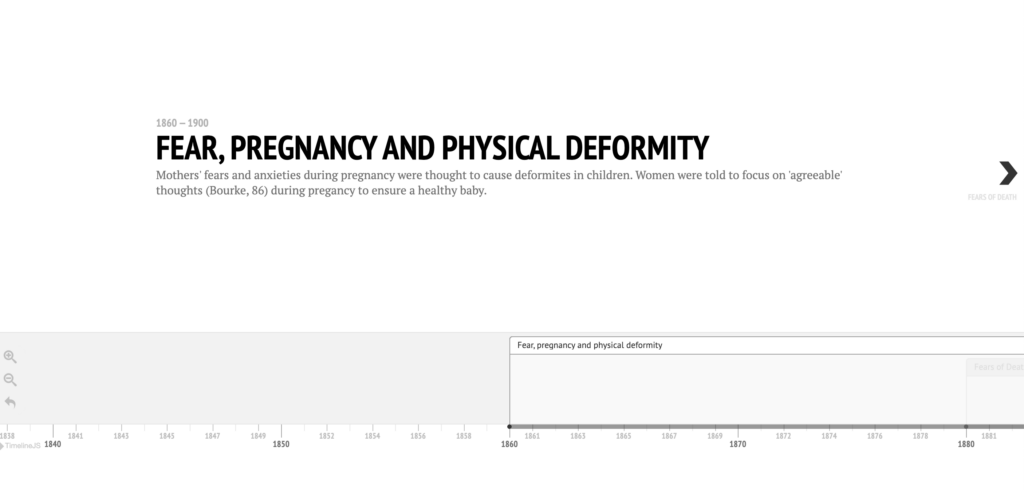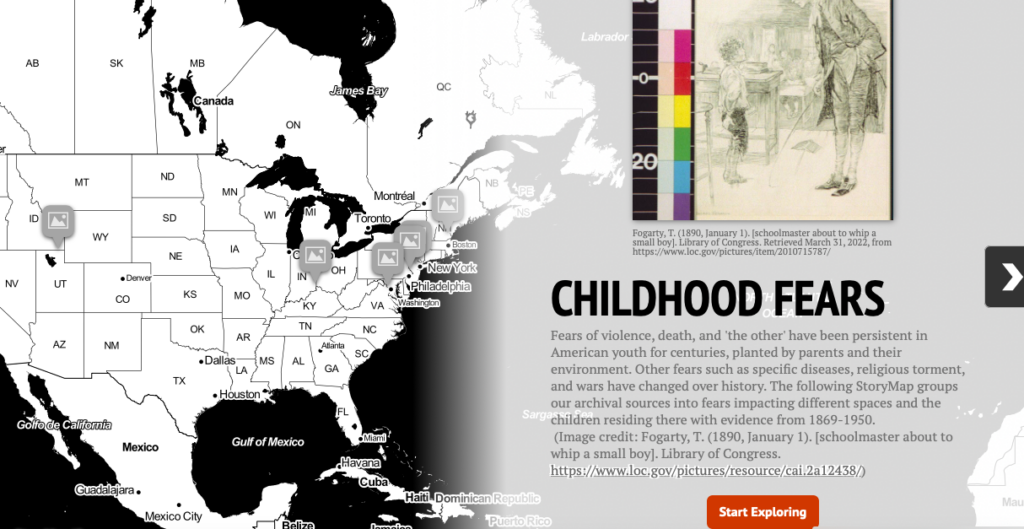The timeline below follows trends in ‘best practice’ for controlling fear in children. These practices shifted with changing family structures, dominant modes of production and consumption, and socio-cultural events, such as World Wars I and II, the Great Depression, and the Cold War. The timeline provides a background to understand the temporality of childhood fear. It’s important to note that ‘best practices’ were based on a White, middle-class childhood – these ‘best practices’ worked to co-produce an ‘ideal’ childhood.

The StoryMap (below) analyzes childhood fears and how parents and children’s environment play a role in creating them. These fears are on multiple scales, from national to specific cities or rural areas.

The map below shows census data from 1910, looking at children ages six to twenty in school. Student attendance dropped multiple times throughout history for multiple different reasons, many surrounding fears of parents. Some of these fears include their children getting sick while at school, many children also feared going to school due to the violence they received at school both from teachers as punishment and from bullies. School also became less of a priority during war periods when parents were less likely to send their children to school (U.S. Department of Education)

The maps below show unemployment rates in 1930 (top) vs 1950 (bottom). These maps reflect two important time periods in the 20th century of the US. The year 1930 marked the beginning of the Great Depression and 1950 marked the prosperous boom of the mid-century. These maps are relevant to fear because financial instability in the 1930s likely was a cause of fear for many Americans. If parents were afraid of what might happen due to their financial instability, this fear might affect their children. This fear also probably functioned on a larger, more nation-wide scale as well. Children growing up in the 1930s vs the 1950s likely had very different experiences of childhood, financial (in)stability being a large contributor to this.